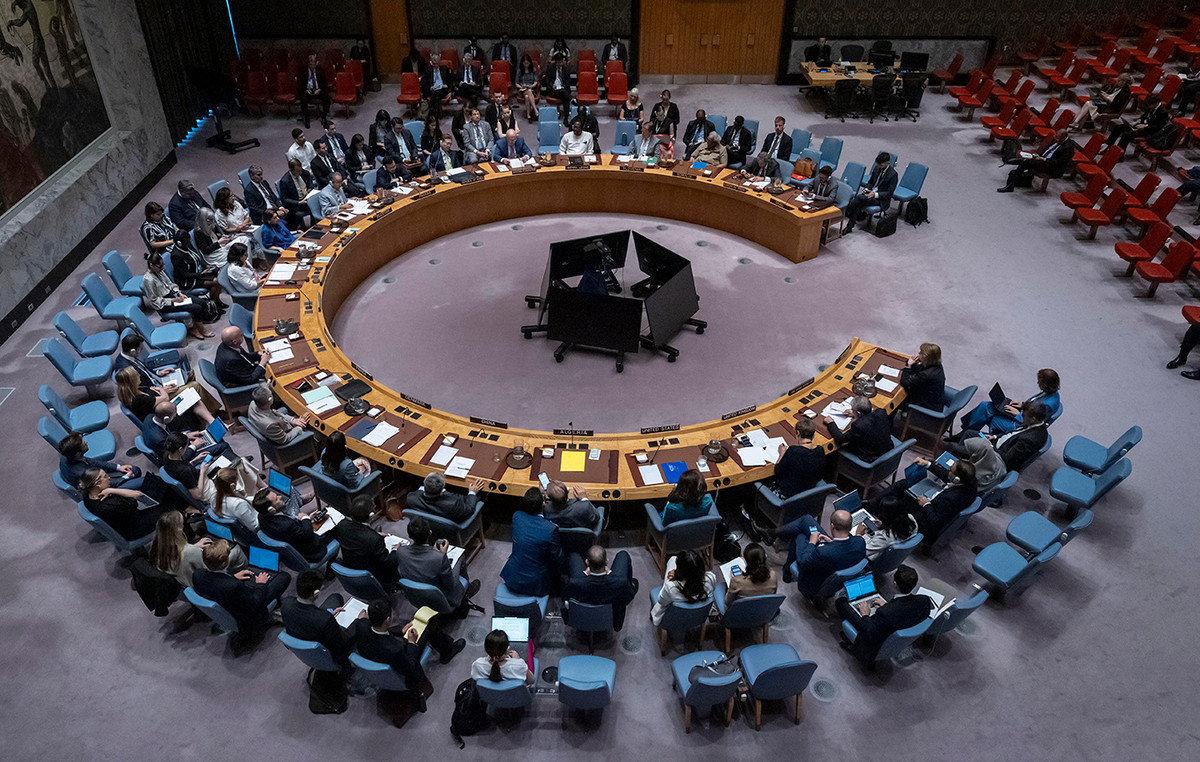Loss of sensation, tingling, decreased strength and mobility. These were some of the symptoms that affected Patrícia Gonçalves Soares, 36, resident of Vitória da Conquista, Bahia, diagnosed with leprosy in 2013.
Leprosy is one of the oldest diseases of humanity, with case reports dating back to 600 BC Despite being old, it is still a serious public health problem, especially in Brazil, which has the second highest number of new cases in the world, behind from India.
The disease, which was once called leprosy, was renamed due to the stigma associated with the term. Since 1995, by definition of Law No. 9010, the term leprosy and its derivatives can no longer be used in the language adopted in official documents of the Union, states and municipalities. This Sunday (30) is marked by the World Day to Combat Leprosy.
Patricia, who works as national coordinator of the Movement for the Reintegration of People Afflicted by Leprosy (Morhan), says that she went through different consultations and medical care until the diagnosis was confirmed.
“I already had symptoms that were signs of leprosy for a long time, but no doctor suspected that it could be the disease. I made a pilgrimage from doctor to doctor until I was seen by one from the State University of Southwest Bahia, who suspected that it could be leprosy”, he says.
She says that she had no knowledge about the disease at the time of diagnosis and that the discovery of prejudice around the disease was a factor of concern. “I usually say that I was a case study and that everything that can happen worse in leprosy happened to me. At first, it was a very bad situation, but with the treatment I got better and I no longer have the disease, but the care remains”, she reports.
A leprosy is caused by a bacterium called Mycobacterium leprae, which mainly affects peripheral nerves and the skin. Complications of the disease can lead to physical disabilities, especially in the hands, feet and eyes.
The most frequent signs include numbness, tingling and decreased physical strength of the hands, feet or eyelids, in addition to white or red spots with decreased or lost sensation of heat, pain or touch.
In Patrícia’s case, the disease progressed to an aggravated clinical condition, mainly due to the late diagnosis. She developed a clinical condition called erythema nodosum, which is an acute inflammatory reaction that overlaps with the chronic and gradual course of leprosy.
“I reached a stage of necrotizing erythema, like bloody water bubbles. When I got to that stage, I came to think that there was no cure and that I would never get better, it was very shocking at that point”, he says.
The follow-up by a multidisciplinary team, with doctors, nurses and physiotherapists, contributed to the improvement of the situation. Today, Patrícia is cured of leprosy and is dedicated, together with Morhan, to the fight for guaranteeing and respecting the rights of people affected by the disease and their families.
Created in 1981, Morhan is an entity that promotes awareness-raising activities and focuses on building effective public policies for the population affected by the disease.
Leprosy is treated with a combination of three antibiotics (rifampicin, dapsone and clofazimine). The indication of treatment depends on the clinical condition of each patient, ranging from six months to a year. THE treatment improves quality of life, reduces the risk of complications and stops transmission of the disease.
neglected disease
Leprosy is considered by the World Health Organization (WHO) as a neglected disease.
According to the WHO definition, diseases of this type are considered endemic in low-income populations and contribute to the maintenance of inequalities in the world. In addition, the low investment in scientific research by large companies and pharmaceutical companies widens gaps in diagnosis and treatment.
“Epidemiological studies carried out using large databases have shown that people who end up developing the disease are those with a lower level of education, lower wages and who have worse living conditions”, says researcher Milton Ozório, from Instituto Oswaldo Cruz. (IOC/Fiocruz).
According to the expert, the persistence of leprosy in Brazil as a public health problem can be explained, in part, by the social determinants of health. According to the WHO definition, the concept encompasses non-medical factors that influence human health, including the conditions in which people are born, grow, work, live and age. The determinants permeate economic systems, public and social policies and development agendas.
“When we talk about precarious living conditions, we include issues such as lack of sanitation, lack of running water and all these factors that are important in what we consider the social determinants of health. Unfortunately, the persistence of these factors in Brazil is a risk precisely for these populations that live in poverty and end up developing the disease more often,” adds Ozório.
In the evaluation of the professor at the University of Brasília (UnB), Ciro Martins Gomes, there is still a lack of investment in diagnosis and treatment of the disease in the country.
“Social inequality still makes leprosy a relevant disease. Every problem we have of public health, sanitation and people living in very crowded places, leads to the increase of a communicable disease. The social and economic development of Brazil, which is not satisfactory, justifies this still high number of cases”, he says.
The researcher at the Faculty of Public Health at the University of São Paulo (USP), Carla Lisboa Porto, highlights that the persistence of leprosy is also associated with the difficulty in making the diagnosis in a timely manner.
“We have aspects of difficulty in diagnosis and training on the part of health professionals. We have a country of continental dimensions, which has gigantic social differences, including the population’s access to health monitoring equipment”, he says.
For Carla, access to information about the disease still happens unevenly in different Brazilian cities and regions. She defends the need to invest in public policies and awareness campaigns.
“These are measures that cannot equally serve populations and municipalities that have very different characteristics, whether in terms of access or training in health care. The main reason for not eradicating and controlling the disease is the silencing of public policies regarding leprosy. Although they exist, there is still no more effective disclosure,” he says.
Underreporting of cases
Preliminary data released by the Ministry of Health indicate that Brazil diagnosed 15,155 new cases of leprosy in 2021, a rate below that recorded in 2020, of 17,979 cases. In the last two years, it is observed that the number of cases was much lower when compared to the year before the pandemic. In 2019, for example, 27,864 cases of the disease were reported.
In 2020, 127,396 new cases of the disease were reported worldwide to the WHO. Of these, 19,195 (15.1%) occurred in the Americas, with 17,979 reported in Brazil – which corresponds to 93.6% of the number of new cases on the continent.
For researchers, the pandemic directly impacted the detection of new cases. The lower rates may be associated with underreporting of the disease due to the difficulty in maintaining the provision of services and specialized care.
“In the two years of the pandemic, we had a reduction of around 50% in diagnoses. It is not that the disease has reduced, it is because almost half of the cases were not diagnosed due to the problem of access to health. We have to run after this loss”, says Gomes.
although the leprosy is treatable and curable, stigma still contributes to difficult adherence to treatment. “When people feel cornered by prejudice or that it can have social repercussions, they have both the difficulty of seeking care and accepting the diagnosis and treatment, which takes from six months to a year”, says the UnB professor. .
Strategies to reduce the incidence of the disease
In the context of the international health agenda, leprosy is part of the United Nations (UN) Sustainable Development Goals (SDGs). The initiative aims to combat epidemics of the disease and other communicable diseases, such as tuberculosis and malaria by 2030.
In Brazil, the objective of reducing the disease burden by the end of 2022 is part of the National Strategy to Combat Leprosy (2019-2022).
According to the Ministry of Health, the goal can be achieved from the surveillance and examination of people close to those who had a confirmed diagnosis. In addition, the folder suggests that health professionals make an active search to diagnose and treat new cases.
At an event held on the 25th, in reference to the Janeiro Roxo campaign, to raise awareness of the disease, the Minister of Health, Marcelo Queiroga, announced that two new laboratory tests complementary to the diagnosis of leprosy will be included in the Unified Health System (SUS).
The “GenoType LepraeDR” and “NAT Hans” tests are molecular diagnostic tests, technically called PCR, capable of detecting the DNA of the bacterium that causes the disease.
The technology must be offered at the Central Public Health Laboratories (Lacens). According to the ministry, at this first moment, 10 states should receive the technologies by the end of 2022. The expansion forecast for all states and the Federal District is until the end of 2023. Another type of exam, which consists of a test fast, will be offered in Basic Health Units.
Developed by researchers at Fiocruz, the “NAT Hans” kit was registered with the National Health Surveillance Agency (Anvisa) in 2021. The new diagnostic method was developed by the Oswaldo Cruz Institute (IOC/Fiocruz) in partnership with the Carlos Chagas Institute ( Fiocruz Paraná) and the Institute of Molecular Biology of Paraná (IBMP), linked to Fiocruz and the Paraná government.
“The rapid test for diagnosis is a great achievement, because we have a health system with universal access as comprehensive as ours, Brazil is the first country in the world to incorporate these tests and offer them free of charge to our population”, said Queiroga In the event.
Source: CNN Brasil







